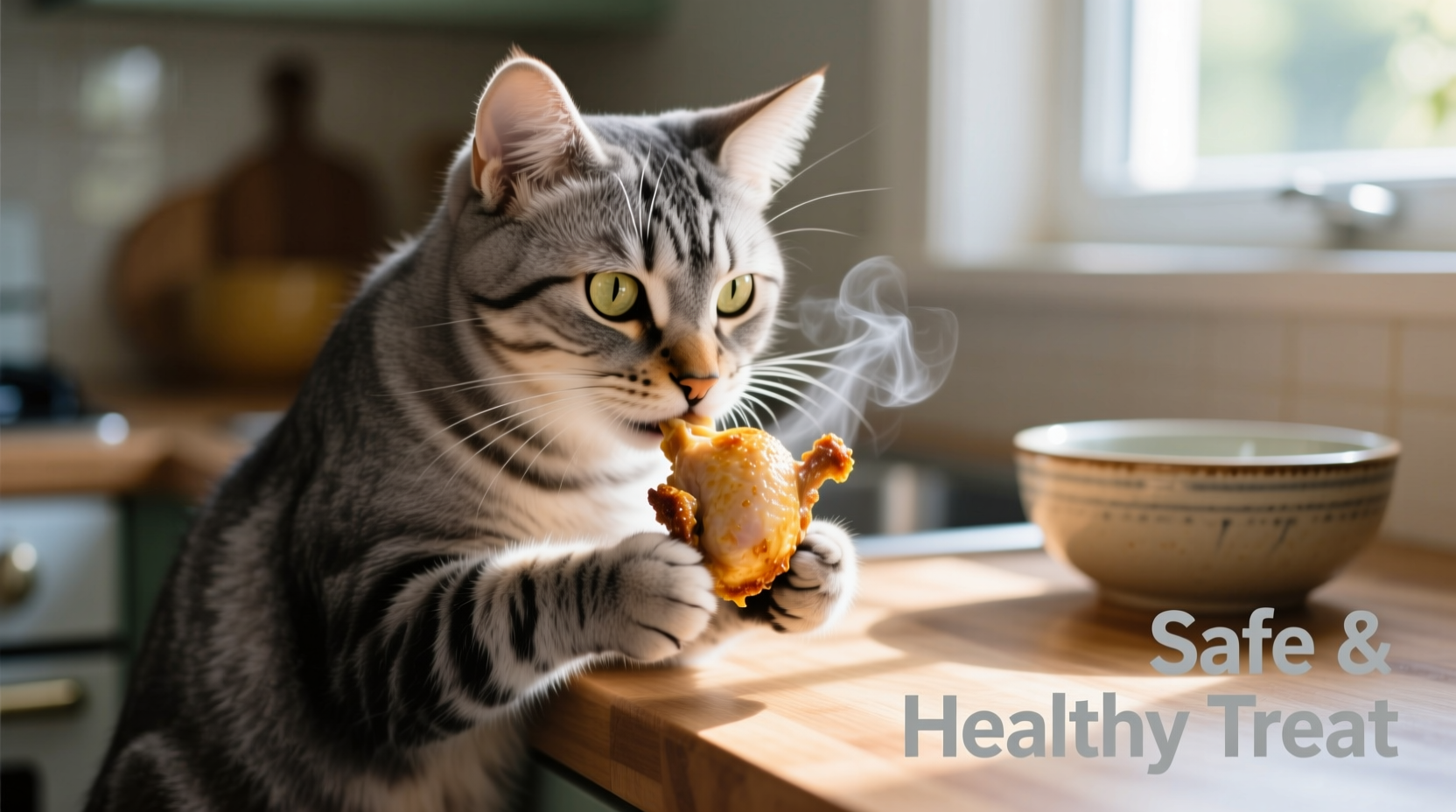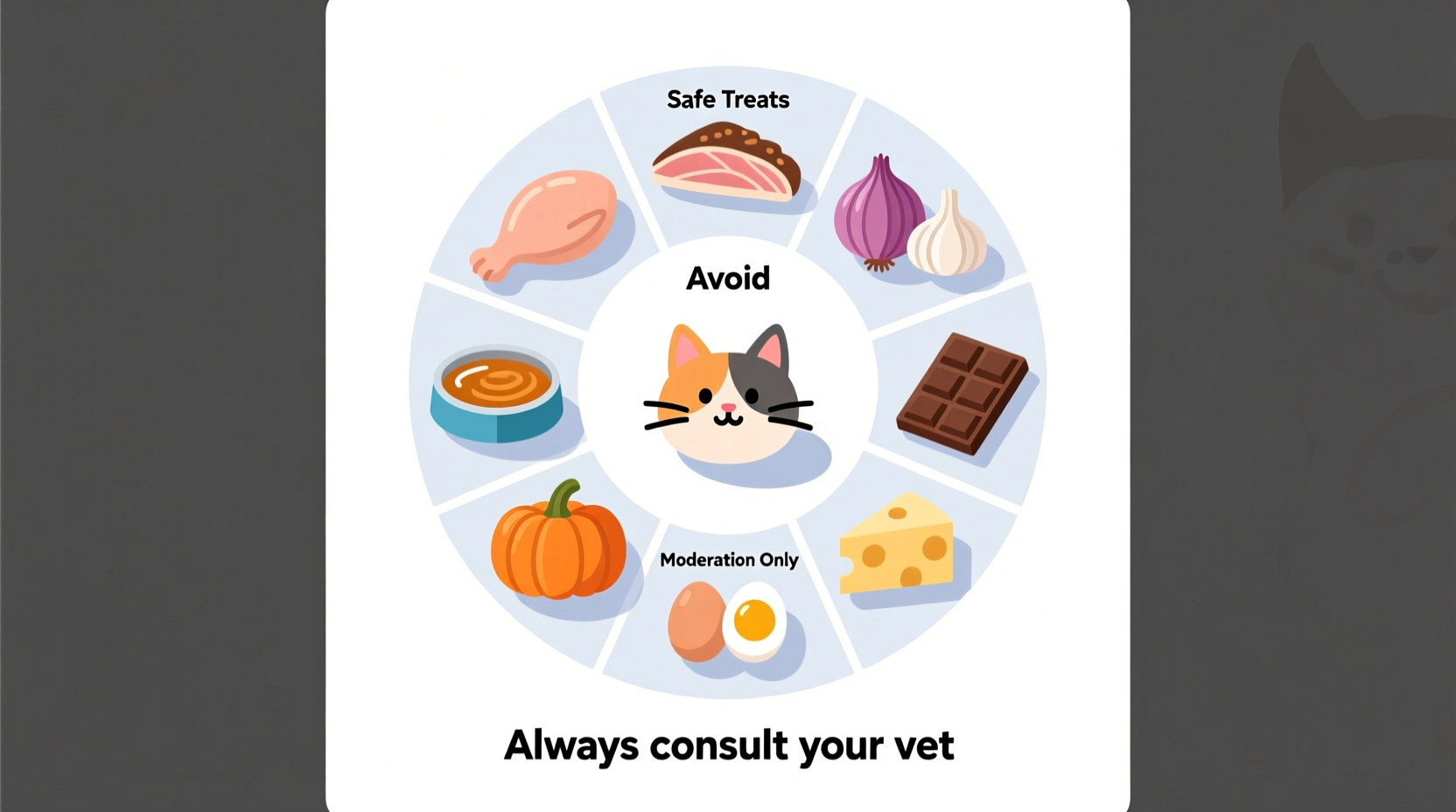Based on veterinary consensus, cats can safely eat small portions of cooked chicken, turkey, or fish; plain cooked eggs; and limited amounts of pumpkin or blueberries. Never feed cats onions, garlic, chocolate, grapes, or caffeine, as these are toxic. Always consult your veterinarian before introducing new foods to your cat's diet.
Understanding Your Cat's Unique Dietary Needs
As obligate carnivores, cats require meat-based nutrition to thrive. Their bodies need specific nutrients like taurine, arachidonic acid, and vitamin A that only come from animal sources. While commercial cat food provides balanced nutrition, many owners wonder about safe alternatives or occasional treats.
Immediate Safety Concerns: Foods That Can Harm Your Cat
Before exploring what your cat can eat, understanding dangerous foods is critical. The ASPCA Animal Poison Control Center reports thousands of pet poisoning cases annually from common household foods. Immediate veterinary attention is required if your cat consumes any toxic substance.
| Highly Toxic Foods | Why They're Dangerous | Minimum Dangerous Amount |
|---|---|---|
| Onions & Garlic | Cause hemolytic anemia by damaging red blood cells | As little as 5g per kg of body weight |
| Chocolate | Theobromine affects nervous system and heart | Dark chocolate: 1.5 oz for 10lb cat |
| Grapes & Raisins | Can cause acute kidney failure | As few as 11 grapes for some cats |
| Xylitol | Triggers insulin release causing hypoglycemia | 0.1g per kg body weight |
Safe Occasional Treats for Cats
When properly prepared and served in appropriate portions, certain human foods can provide variety and nutritional benefits. The Cornell Feline Health Center emphasizes that treats should never exceed 10% of your cat's daily caloric intake.
Protein Sources
Cooked, unseasoned meats make excellent protein supplements. Always remove bones and excess fat:
- Chicken or turkey: 1-2 small pieces (about 10-15g) 1-2 times weekly
- Fish: Cooked salmon or tuna (limit to 1 teaspoon weekly due to mercury concerns)
- Eggs: Fully cooked scrambled or boiled (no more than 1 teaspoon weekly)
Fruits and Vegetables
Most cats show little interest in produce, but some tolerate small amounts:
- Pumpkin: 1-2 teaspoons of plain canned pumpkin aids digestion
- Blueberries: 2-3 berries provide antioxidants
- Cantaloupe: Small cubes as occasional treats

Nutritional Considerations Beyond Treats
While occasional human foods can supplement your cat's diet, they shouldn't replace balanced nutrition. The American Association of Feline Practitioners notes that cats require specific amino acids like taurine that aren't found in plant-based foods. A 2022 study published in the Journal of Feline Medicine and Surgery found that cats fed exclusively human food developed nutritional deficiencies in 87% of cases.
Introducing New Foods Safely
Follow this gradual approach when offering new foods:
- Start with tiny portions (about the size of your pinky nail)
- Wait 24 hours to monitor for adverse reactions
- Introduce only one new food at a time
- Discontinue if vomiting, diarrhea, or lethargy occurs
Special Considerations for Different Life Stages
Cat nutritional needs vary significantly by age and health status:
- Kittens: Require higher protein and specific nutrients for growth; avoid most human foods until 12 weeks old
- Senior cats: May benefit from easily digestible proteins but require veterinary guidance due to potential kidney issues
- Medical conditions: Cats with diabetes, kidney disease, or allergies need specialized diets; consult your vet before offering any alternatives
When to Consult Your Veterinarian
Professional guidance is essential when:
- Considering dietary changes for medical reasons
- Noticing weight changes despite consistent feeding
- Planning to prepare homemade cat food
- Your cat shows interest in unusual foods
Board-certified veterinary nutritionists can create customized meal plans when commercial foods aren't suitable.











 浙公网安备
33010002000092号
浙公网安备
33010002000092号 浙B2-20120091-4
浙B2-20120091-4